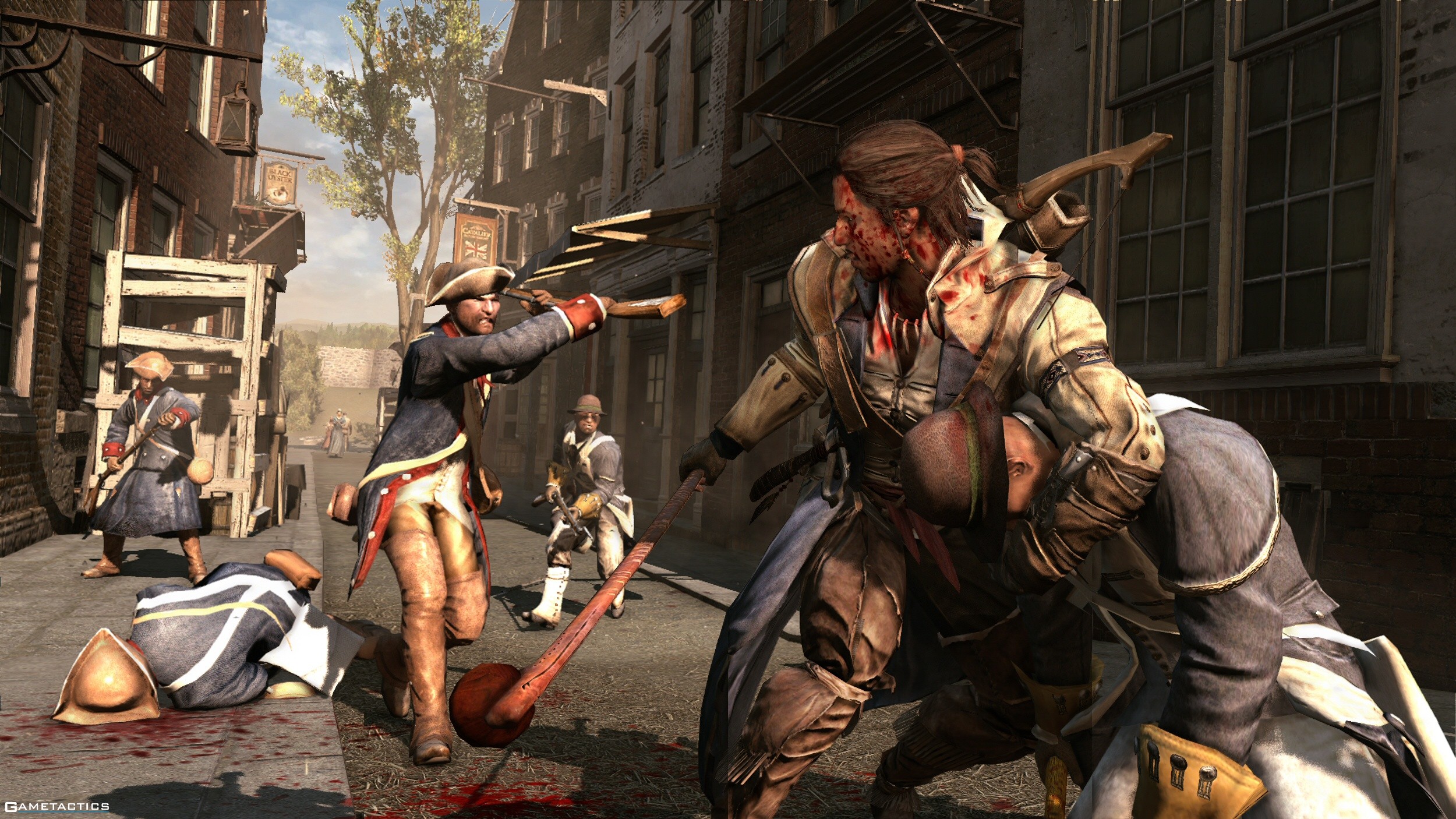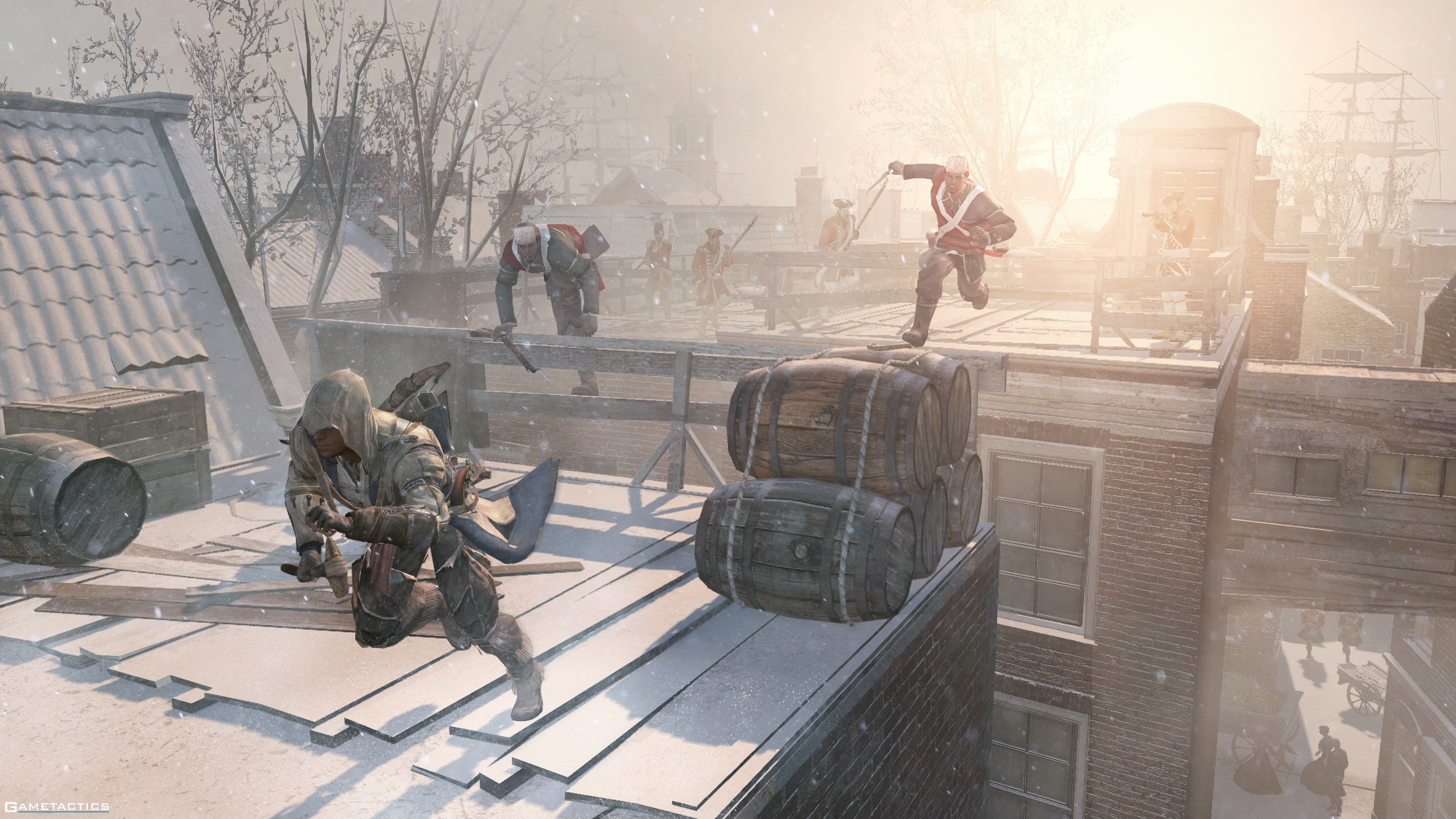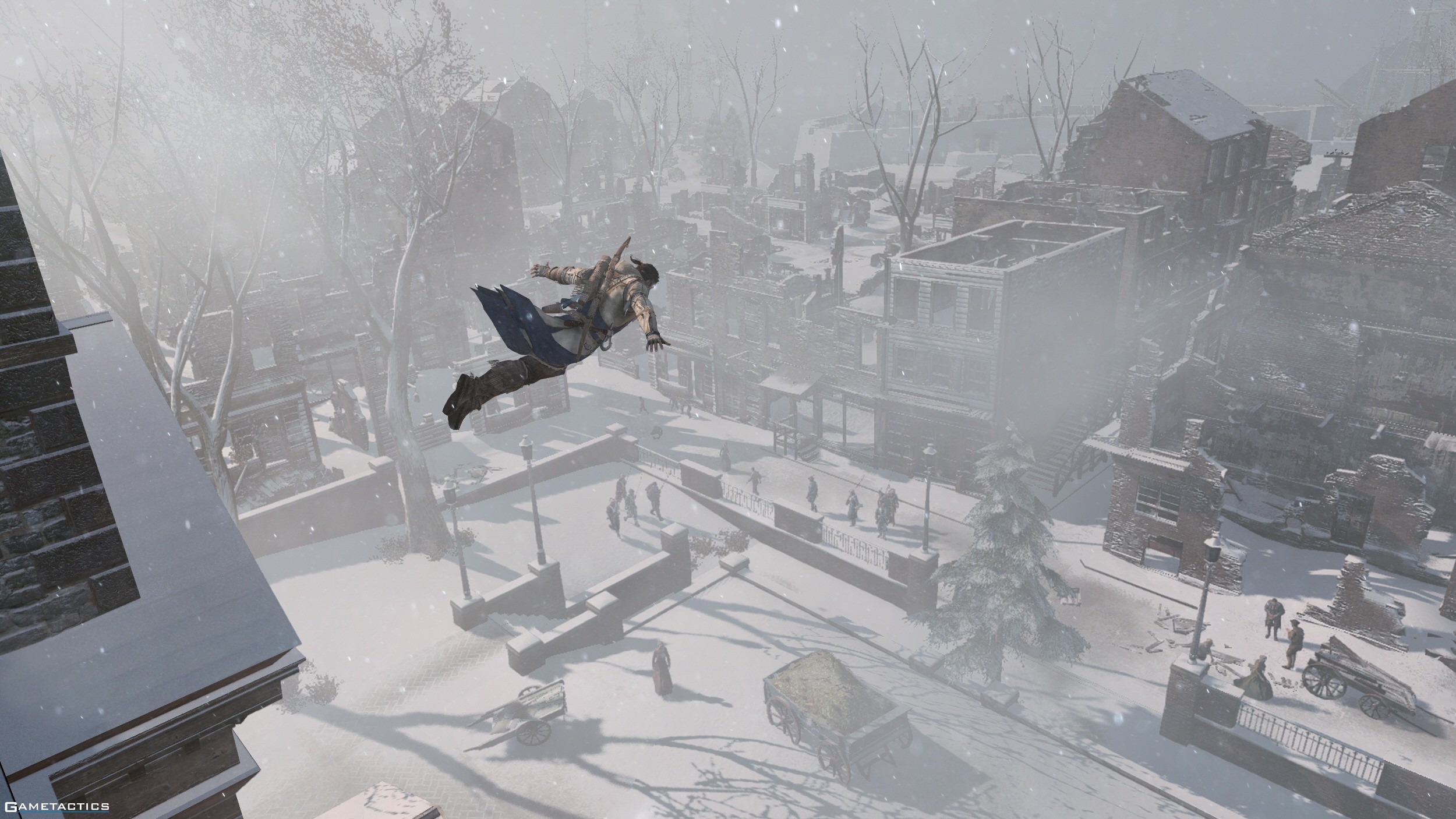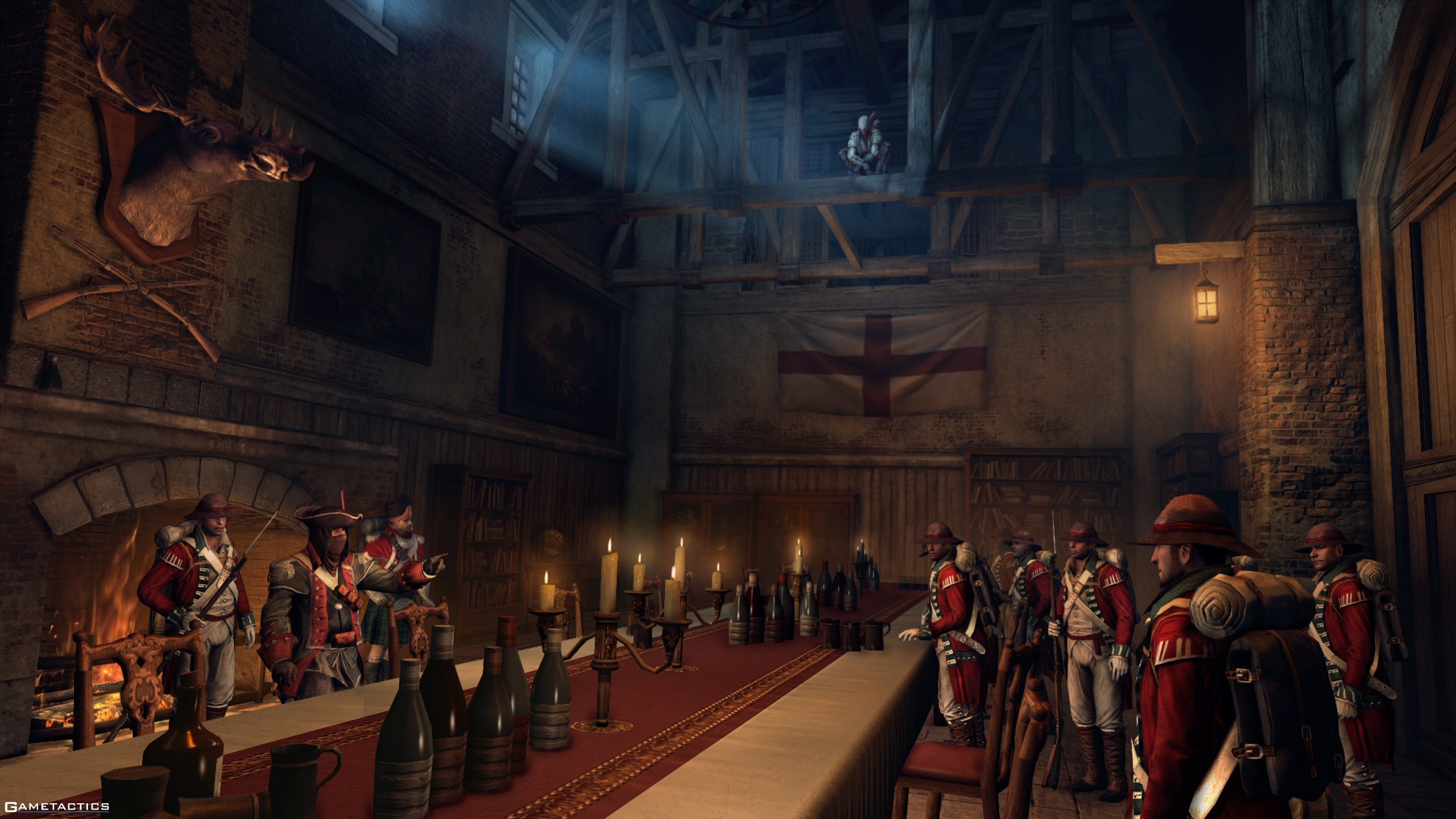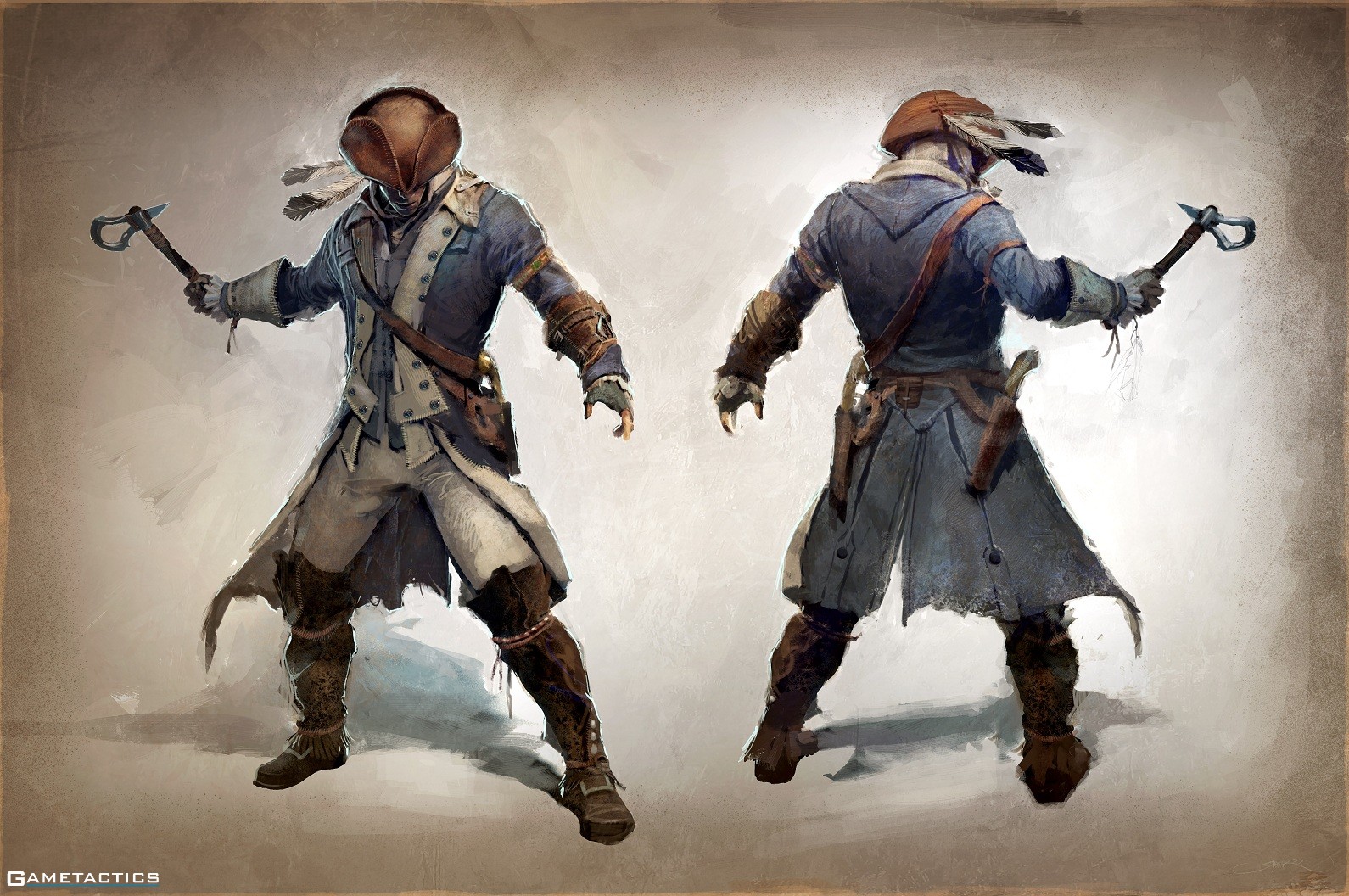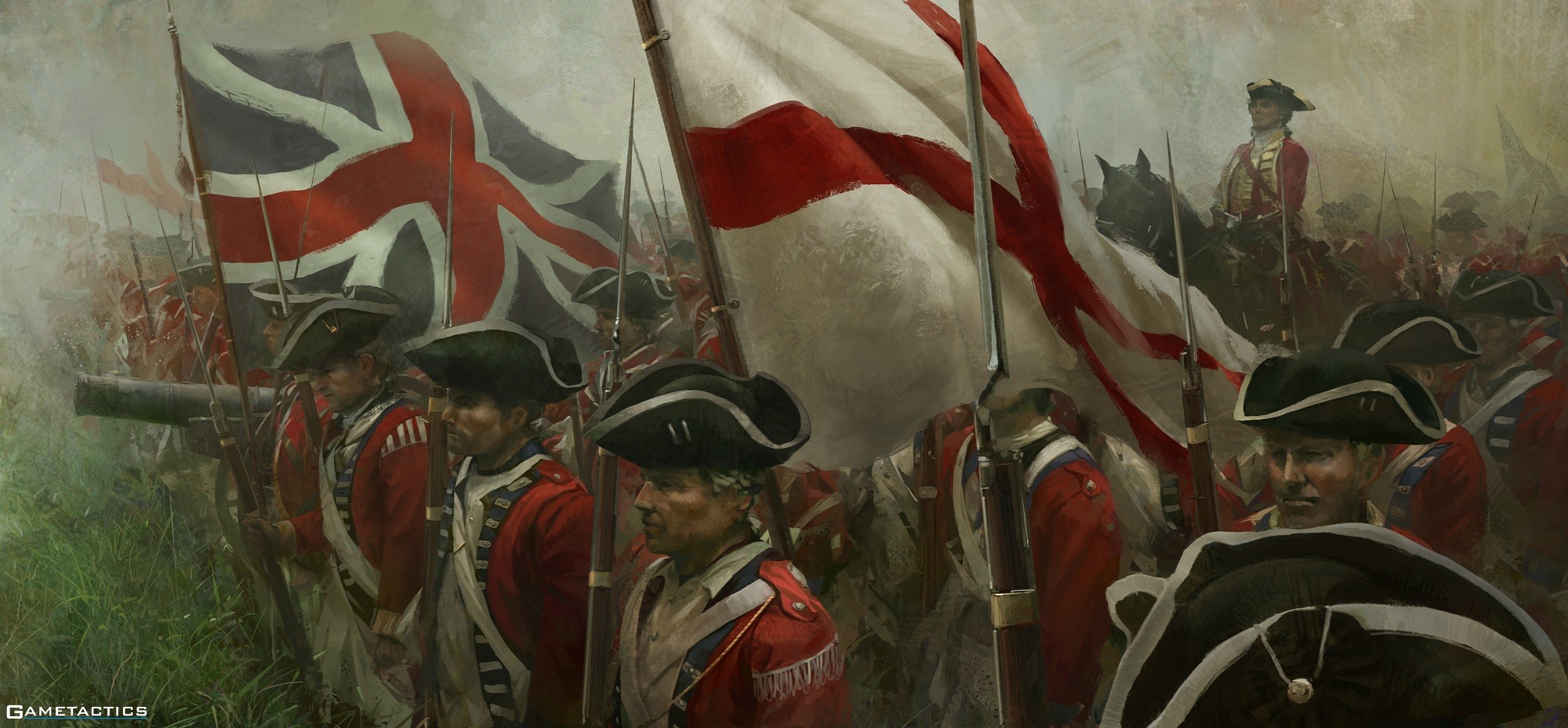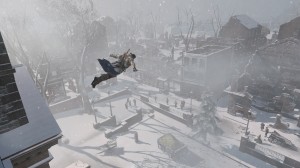 Here we are again. Another fall gaming release season, and like clockwork, a new Assassin’s Creed appears on the shelves. Ubisoft achieves this feat by rotating each edition among its developers. In reality, Assassin’s Creed III has been in development with its most senior team since 2010, which is appropriate since it’s clearly their most ambitious title yet and it has definitely paid off with a rich experience and more varied gameplay than ever.
Here we are again. Another fall gaming release season, and like clockwork, a new Assassin’s Creed appears on the shelves. Ubisoft achieves this feat by rotating each edition among its developers. In reality, Assassin’s Creed III has been in development with its most senior team since 2010, which is appropriate since it’s clearly their most ambitious title yet and it has definitely paid off with a rich experience and more varied gameplay than ever.
Much like Revelations before it, Assassin’s Creed III makes no bones about its position as a sequel, so if you’re new to the series I suggest you go back to at least AC2 before picking this up. While it begins with a quick recap of the story up to current point, the explanation is so thin it will likely serve to confuse more than elucidate things for a newcomer. Really though, that only applies to the present day part of the story featuring Desmond and his comrades. If you have any rudimentary knowledge of American history (and especially if you have a great fondness for it like I do), the main plot of Desmond’s latest assassin ancestor, Connor, and his involvement in the Revolutionary War will be quite familiar and enthralling for sure. The beginning of your dive into the Animus involving Connor’s origins is absolutely brilliant, and I literally can’t say more without spoiling. From there you will encounter many of the founding fathers and their famous contemporaries: Ben Franklin, Sam Adams, Marquis de Lafayette, and of course, the United States’ first commander in chief, George Washington. Everything is historically accurate as it could be while still weaving in a completely fictional half-white, half-Native American assassin and his templar rivals manipulating things along the way.
Don’t go into this thinking the game simply glorifies the revolution either. The writers did a great job of properly framing and exposing the doubt that loomed over both sides of the war, both in their motives and their strategies. This is not just a story of do-gooder Assassin Patriots versus the evil manipulative Templars and their British accomplices. In fact the lines aren’t necessarily drawn across the two sides of the battlefield. Every step of the way, with each target taken out, you will find yourself questioning if you’re really on the right side of things. Are you bringing about peace and freedom or merely introducing more chaos? While this theme has come up before in the series (particularly after each assassination), I really believe Assassin’s Creed III tackles the issue more openly with some real dialogue and both sides having their say, instead of some spiteful words before death. The Templars are finally more fleshed out and no longer just caricature villains. Cutting back to the real world and Desmond’s role, the story progresses far more than any previous game did. While his segments are completely linear, he finally actually gets to be an assassin for a while and confront Abstergo directly. We are also finally treated to answers to many burning questions as the First Civilization explains the disaster approaching Earth and their past. Ultimately however, I found the ending of this part of the story rather aggravating. If you thought the previous cliffhangers were annoying, boy does this take the cake! To me the historical aspect continues to outshine their attempts to make things relevant to the present, and I hope we don’t lose that in future sequels.
When Assassin’s Creed III and its setting were first announced, I was a bit skeptical about what it meant for the gameplay. Unlike renaissance Italy and Turkey, America wasn’t exactly littered with huge metropolises at this early stage of existence. How many rooftops and alleyways were you going to be able to sneak around in? And then you had that vast frontier between towns to deal with, how would that work? Well for the first question, it turns out the virtual versions two major cities of Boston and New York are plenty large enough still, if a bit smaller than Rome or Constantinople, so at least within these two centers of population the familiar Assassin’s Creed gameplay remains largely the same, with plenty of hiding places and crowds to conceal your presence and platforms for your parkour. There are a few differences though. Your health meter automatically regenerates now, but only when you’re out of combat. Counterintuitively, this actually makes things more difficult as you can no longer consume medicine in the middle of battle to completely heal up. There’s also no such thing as armor to upgrade, and your weapons also remain standard, though you can dual wield, use a new item called a dart rope, and pick up guns like muskets if you get tired of Connor’s signature tomahawk. The hand to hand combat got mixed up a little as well. It’s still a counterfest if you want to play it safe (by the way, now you can take out multiple guys with one counter), but no longer can you just hold down the right trigger to constantly block. Now you have to time your block the with B button and engage the counter in time with the X button, which can be a little more tricky when surrounded by troops, some of which aren’t even vulnerable to counters and will hurt you for even trying. Also there is no more claiming territory in the city or tower defense like in Revelations. Instead you have a homestead you can build up much like Ezio does in Assassin’s Creed II, and forts in the countryside you can conquer by assassinating their officer.
Speaking of the countryside, there’s a whole new dynamic once you get to the open range. First of all, you actually have weather to deal with! Fog, rain, and of course most prominently perhaps, snow, depending on what part of the story you’re at. The snow in particular gets in the way of navigating, as the heavy stuff will slow you down. But you’ll quickly learn that parkour now extends to the trees now that their branches have been conveniently arranged for your traversal. Most interesting however is the new hunting component of the game. By analyzing clues along the way you can identify what animals are around you like deer, raccoon, or cougars, then set snares, attract them with bait, or just go after them with bow and arrow. Depending on your means of disposing them, you can get more money for their skin and meat. This becomes a way to raise money, though honestly there isn’t a whole lot to spend it on like there was in the first game. The biggest ticket item you can spend money on is your ship. That’s right, probably the coolest addition to the game is the naval warfare component. It only factors into a couple of main story missions, but there’s a whole host of side quests as well. When you’re out at sea, Connor gets to actually take the wheel, call for full, half, or no sails (the slower you go the more you can turn), as well as fire the main cannons or swivel cannons on each side, which you determine by rotating the camera. While it’s certainly faster paced than the real thing, it really gives you an appreciation for how difficult these encounters were. Chasing down ships and circling around for a good shot while avoiding rocks and not leaving yourself open to retaliation is something that takes a decent amount of time to wrap your head around, but it pays off handsomely when you’re finally victorious.
As for multiplayer, not a whole lot has changed in the basic modes from Revelations, except for some new abilities which help scatter the crowd around a target or disguise you from a pursuer on the other end. There is a new Dominion mode which was kind of to be expected after implementing Artifact (a.k.a. Capture the Flag) mode last time. My favorite new mode though is called Wolfpack, and it’s actually a co-op mode where you work together to take out multiple target NPCs in the most efficient way possible in order to score the most points and proceed through the sequences. Unfortunately a lot of the people on right now don’t understand that the point isn’t to rush but to build up the bonus points by being stealthy or performing hidden and aerial kills. Also the point is to take out multiple targets at the same time for a multiplier bonus and to avoid getting stunned. Still there’s some intelligent people out there to group with and if you have a set of friends it’s going to be a blast. Apparently as you progress along in XP and such it’ll unlock more of “Abstergo’s Story” which will give you more videos and cutscenes with extra gems of information.
I mentioned before the introduction of more weather elements to the game. That’s just one of the many new graphical flourishes in Assassin’s Creed III which really help the game execute on its vision. Characters’ faces are the most detailed they’ve ever been, and the lighting has been improved. The trees and foliage make the frontier come to life and integrate seamlessly with how Connor moves through his environment. You can tell they really pushed the hardware as far as it’ll go however, as framerate begins to suffer in some places, though it runs smoother than previous games at times. Perhaps it’s the fluctuation that just makes the slowdowns more noticeable. Once again the artwork is impeccable, both the British redcoats and the American patriots have incredibly detailed uniforms, not to mention the clothing the Native Americans wear. You can tell less effort was placed on Desmond and company in the present however, though the characters were improved the environments were pretty nondescript by comparison. Hopefully that will change in future sequels.
When talking about audio the main thing to focus on in Assassin’s Creed is the voice acting with all the story telling going on. Overall it’s mostly up to the standard of the series, but I found the Native American speakers to be kind of awkward. I’m not sure if that’s because they decided to go with native speech and there are few fluent voice actors or if that’s just the way the language is spoken, but they came off as more wooden and emotionless outside of Connor’s lines. The rest of it is very good, and America being a land of immigrants, the characters actually have a wide range of accents pertaining to their backgrounds, though it makes me wonder how true to real life they are. How do you determine which Americans talk with a British accent or not exactly? Who knows. Maybe they put in some research into it like everything else. The musical score is strong and the effects really shine during the naval battles with the sound of the cannon fire and the waves beating down on your ship.
Ubisoft Montreal definitely accomplished what they set out to do almost three years ago when they started this project. Assassin’s Creed III takes the series to a whole new level in terms of size and scope. While the cities themselves are smaller, the frontier, the ocean, and all the side quests to do give you an incredible sandbox to play in, and in what is still a unique setting for video games. As with any game this large, there are a few glitches and hiccups exhibited along the way, but at least in my playthrough nothing too startling or gamebreaking. I do worry that this might be the best it gets for this franchise considering how the story ends here, as I don’t know where it could go next. But for now, put that disc in, sit back and enjoy yet another fantastic ride through history.
Gameplay
Graphics
Sound
Overall

